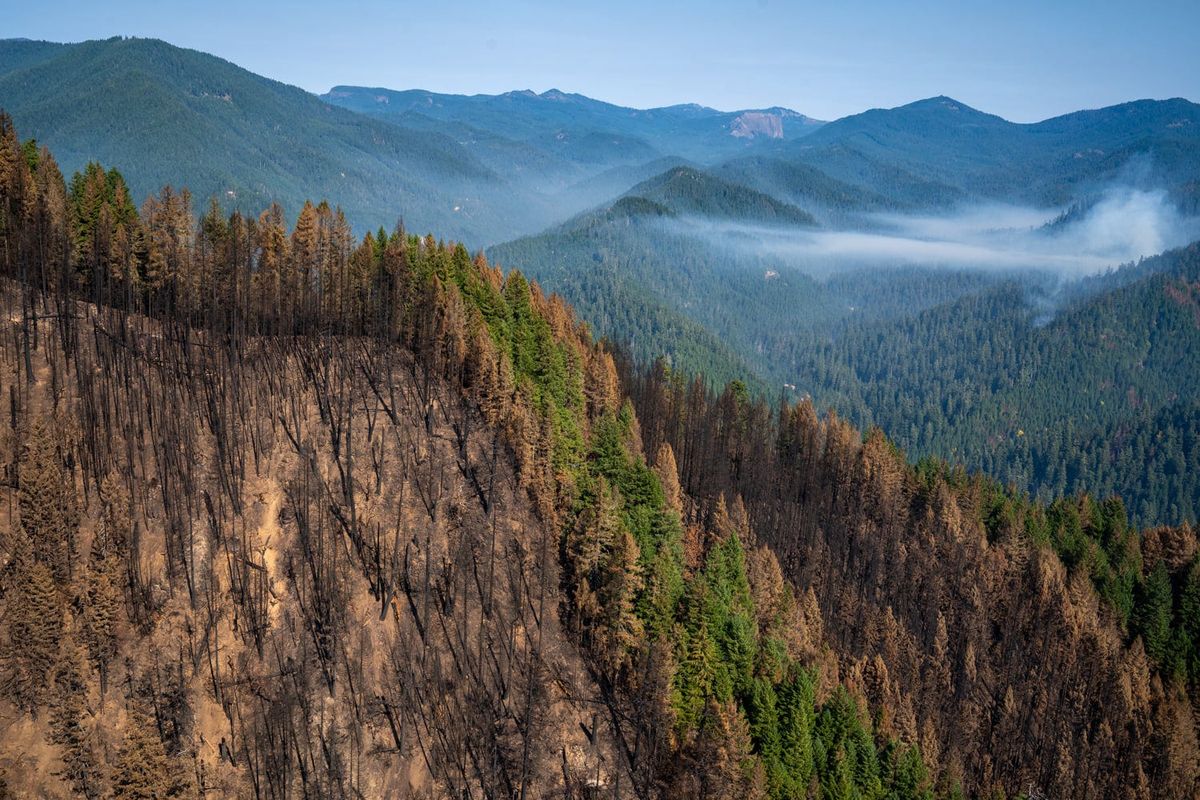Oregon wildfires leave landowners scrambling for seedlings as demand spikes

Last year’s wildfires have created a shortage of seedlings available for replanting burned and logged trees, a situation that could put smaller landowners, especially, into a bind.
Much of the land scorched by wildfires like the Holiday Farm Fire in the McKenzie River Valley left private and industrial timberland with damaged and destroyed trees, leading to a great deal of logging and a West Coast-wide demand for seedling to replace them.
“Seedlings were already in short supply in Oregon before the fires,” Kyle Abraham, chief of the Oregon Department of Forestry’s Private Forests Division, said in a news release. “Now, rough estimates are that somewhere between 80 (million) and 140 million additional seedlings could be needed to reforest just the non-federal lands that burned in 2020.”
That’s about two to three times the typical number needed for reforestation in Oregon, he said.
Industrial logging has, in some cases, shifted to harvesting burned trees in an attempt to salvage marketable timber. Private landowners are harvesting, too, but often lack the resources and forward-planning for replacement seedlings larger timber producers have.
“The wildfire situation has really only exacerbated a situation that’s been of concern specifically for small landowners for some time,” said Private Forests Division Family Forest Land Coordinator Ryan Gordon. “Wildfire strikes unpredictably in unpredictable areas, so it’s difficult to plan for it. It takes a few years to turn a seed into a seedling.”
Oregon law requires replanting after harvesting trees for timber, but there now is a spike in demand for a product that takes two years to grow. Seedlings that will be ready this year already are sold, and those planted because of new demand will take time to grow.
“We were already sold out before the fire came,” said Kathy LeCompte, owner of Brooks Tree Farm north of Salem. “Trees that are only one year old are already in the ground. There isn’t anything we can do to put more in the ground for 2022. It’s a two-year crop.”
While large-scale logging companies can and are moving operations to focus on burned timber while it’s still usable, including replanting with seedlings already on hand, Oregon State University Extension Service Forester Glenn Ahrens said smaller landowners are having a harder time adapting to the needs of an unexpected, wildfire-caused harvest.
“There’s huge new demand for trees over and above what was in the pipeline,” he said.
Last year’s wildfires burned an estimated 400,000 acres of private land, Ahrens said. Those landowners generally only make deals for seedlings before a harvest, but the fires now mean they must cut down damaged trees or risk them becoming valueless.
“They’re going to be competing with the people in the business that, some of them, started ordering trees before the fires were out,” Ahrens said.
OSU Extension Service and the Oregon Small Woodlands Association are surveying landowners affected by the fires and collecting information on their needs.
Ahrens estimates about 1,000 smaller private woodlands owners affected by the fires. Already 325 landowners have replied to the survey, Ahrens said.
“It adds up to 5 million trees or more that may be needed,” Ahrens said. “These are folks who so far have not been able to order trees elsewhere.”
Ahrens said the next step is using the information they collect to make bulk orders.
“We’re looking at backlog of years for these folks to get trees,” Ahrens said. “When you say you want a half-million trees, you’re able to be more competitive with your order.”
Gordon said landowners looking for help or with questions about replanting extensions can call an ODF stewardship forester or an OSU Extension forester.
“There are provisions for us to have some leniency in offering extensions around the two-year requirement in extenuating circumstances like the wildfire case,” Gordon said.